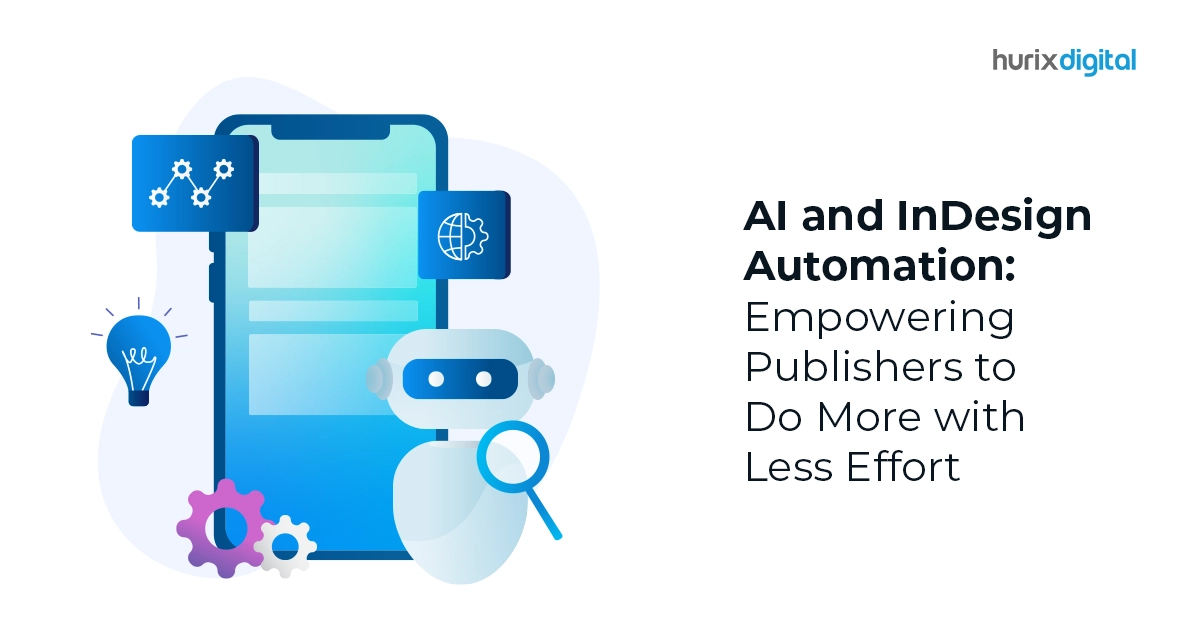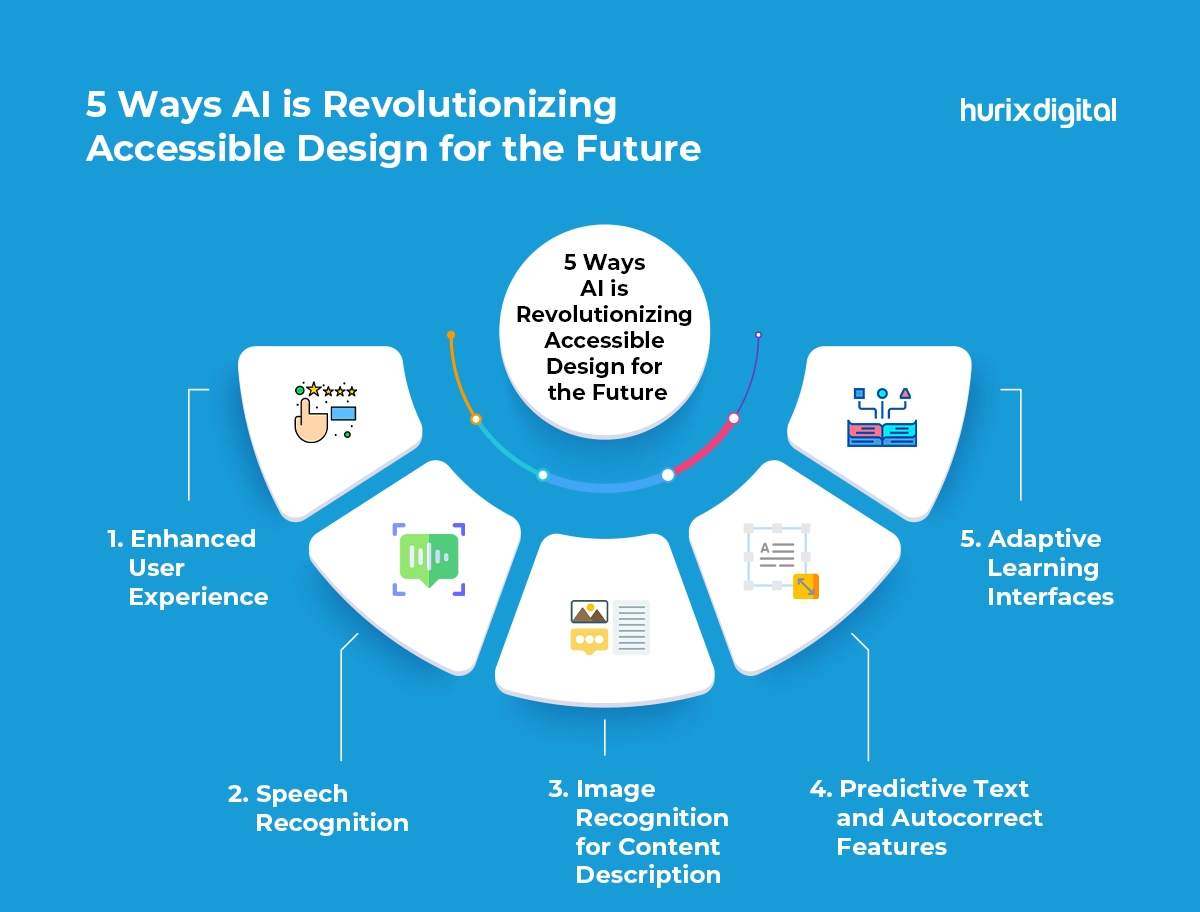
AI and InDesign Automation: Empowering Publishers to Do More with Less Effort
Summary
This article discusses how AI and InDesign automation empower publishers to do more with less effort. It highlights how these technologies streamline publishing processes, enhance design efficiency, reduce manual tasks, and improve productivity.
The publishing industry is in a constant state of flux. Digitization, evolving reader preferences, and content overload demand agility and innovation. Publishers are juggling tighter deadlines, shrinking budgets, and the need to cater to diverse platforms. In this dynamic landscape, finding ways to do more with less is no longer a luxury; it’s a necessity.
This is where Artificial Intelligence (AI) and InDesign automation step in as game-changers. By automating repetitive tasks and streamlining workflows, AI empowers publishers to focus on what truly matters: creativity, strategy, and delivering exceptional content experiences. It is believed that 90% of digital content will be generated by AI by 2026.
Table of Contents:
- The Power of AI-Fueled Art of Automation
- Navigating the AI Journey: A Publisher’s Roadmap
- Beyond the Hype: Practical Applications of AI in InDesign
- Embrace the Future of Publishing: The AI-Powered Revolution Awaits
- Wrapping Up
The Power of AI-Fueled Art of Automation
AI is a journey, not a destination. Start small, celebrate each successful leg, and gradually expand your reliance on automation as confidence and experience build. Research by McKinsey & Company suggests that AI could automate up to 50% of current publishing tasks, freeing up human workers for more strategic roles.
- Say Goodbye to Repetitive Tasks: AI automates mundane tasks like manually resizing images, formatting text, or applying templates, freeing up valuable time for higher-level work.
- Enhanced Accuracy and Consistency: Say goodbye to typos and formatting inconsistencies. AI ensures accuracy and consistency across documents, maintaining brand guidelines and professional quality.
- Faster Turnarounds: AI automates time-consuming processes, enabling faster production cycles and quicker time to market.
- Cost Optimization: Reduce reliance on manual labor and eliminate errors. AI optimizes resource allocation, leading to cost savings and improved efficiency.
- Unleashing Creative Potential: With tedious tasks handled by AI capabilities, publishers can unlock their creative potential. Focus on conceptualizing compelling content, using AI in graphic design, curating engaging layouts, and crafting impactful storytelling.
Also Read: The Future of Publishing: How AI is Revolutionizing InDesign Workflows?
Navigating the AI Journey: A Publisher’s Roadmap
Embracing AI in your publishing workflow involves strategic planning. To ensure a smooth and successful transition, here are some key steps to guide you:
1. Identify Automation Opportunities
Before diving into the world of AI tools, take a good look at your existing workflow. Conduct a thorough audit and pinpoint tasks that are repetitive, time-consuming, or prone to errors. These are the prime candidates for AI automation.
Data entry, image selection, and basic formatting are just a few examples. By freeing your team from these tedious tasks, you’ll unlock their true potential for more strategic and creative endeavors.
2. Seek the Right Tools
The world of AI-powered InDesign solutions is vast and diverse. Explore various plugins and software options, considering factors like your budget, specific needs, and compatibility with your existing software.
Don’t be afraid to compare the AI-driven features and conduct trials for different tools to find the perfect fit for your workflow. The ideal solution should seamlessly integrate into your existing ecosystem, minimizing disruption and maximizing efficiency.
3. Pilot Project Launch
Before going all-in, it’s wise to test the waters with a small pilot project. Choose a specific task or department to implement the tool and assess AI’s impact on graphic design. Gather feedback from your team, analyze the results, and iterate on the process before a wider rollout.
This pilot phase allows you to identify challenges, refine your approach, and ensure a smooth transition for everyone involved.
4. Invest in Training and Support
Remember, AI is a powerful tool, but it’s only as effective as the people who use it. Equipping your team with the knowledge and skills to leverage AI effectively is crucial for success.
Provide comprehensive training on the chosen tool, addressing any concerns or anxieties about this new technology. Ongoing support is also essential to ensure your team feels confident and empowered to navigate the world of AI-powered publishing.
5. Scaling Up with Confidence
Remember, AI integration is a journey, not a destination. Start small, celebrate successes, and gradually expand your reliance on automation as your confidence and experience grow.
By taking a measured and strategic approach, you can ensure a smooth transition and unlock the full potential of AI to transform your publishing workflow.

Beyond the Hype: Practical Applications of AI in InDesign
The advantages of the automation framework are evident. Let’s delve into the practical applications of AI-powered InDesign automation:
- Automated Image Optimization: Resize, crop, and adjust image resolution automatically, ensuring consistency and optimal file size for various platforms.
- Smart Text Formatting: Apply styles, fonts, and spacing rules consistently across documents with AI-powered text formatting tools.
- Dynamic Data Integration: Populate templates with real-time data feeds, creating personalized content or reports effortlessly.
- Accessibility Enhancements: Ensure documents comply with accessibility standards automatically, making content inclusive for everyone.
- Automated Report Generation: Generate reports on project progress, resource allocation, and other key metrics with a few clicks.
Embrace the Future of Publishing: The AI-Powered Revolution Awaits
The publishing world stands at a pivotal crossroads. While traditional methods hold valuable weight, the horizon shimmers with the promise of AI-powered tools poised to revolutionize every aspect of content creation.
From automating tedious tasks to unlocking creative avenues, AI offers the potential to streamline workflows, optimize content, and deliver personalized experiences at scale. Embracing this technological shift isn’t just an option; it’s a necessary step towards thriving in the dynamic landscape of modern publishing.
Integrating AI and InDesign automation marks a watershed moment in the publishing industry. By embracing these transformative technologies, publishers can shed the shackles of repetitive tasks, unlock creative potential, and navigate the ever-evolving landscape with agility and confidence.
Also Read: Tips for Designing Math Books with InDesign: From Concept to Creation
Wrapping Up
AI must be accepted as an ally, not a replacement. Let it handle the mundane tasks while your unique human skills steer the ship. Together, you can write a new chapter in the story of publishing, one filled with captivating narratives, insightful strategies, and boundless innovation.
Ready to unleash your publishing superpowers? Contact Hurix Digital today and explore how our AI-powered InDesign automation solutions can revolutionize your workflows and empower you to do more with less effort.

Vice President – Digital Content Transformation. He is PMP, CSM, and CPACC certified and has 20+ years of experience in Project Management, Delivery Management, and managing the Offshore Development Centre (ODC).





